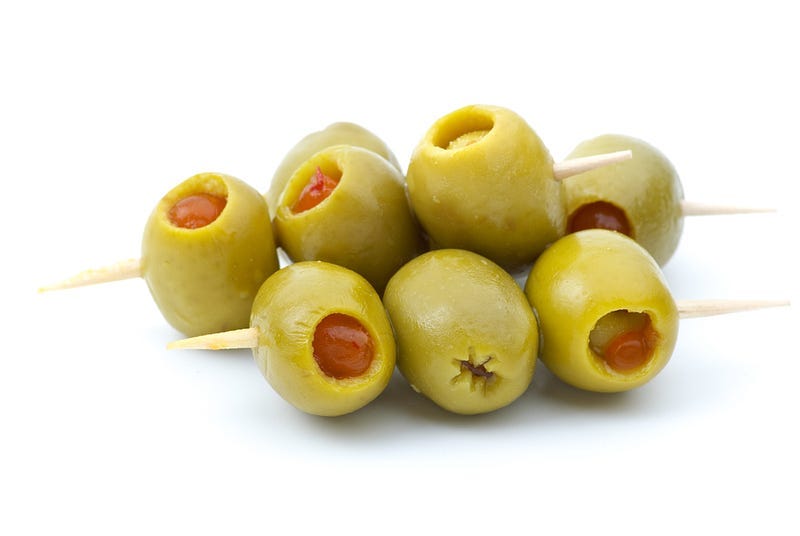Why Are Pimentos In Olives, and How Do They Get There?
Pimentos aren't the only things stuffed in green olives.
A pimento is probably the most recognizable item that is stuffed in a green olive, but when and why did this practice start in the first place?
It’s believed that the first olives stuffed with pimentos happened sometime in the 1700s in the Provence region of France. The pimento may have been used to cut the bitterness of the olive by adding a sweet, mild flavor that contrasted with the salty, briny olive.
Pimentos are a very mild variety of chili peppers and are also known as cherry peppers. But pimentos aren’t the only things stuffed in green olives. You can find green olives stuffed with onions, garlic, blue cheese, anchovies, almonds, or a variety of different peppers.
While the question of why pimentos were first put in olives is fuzzy, how they get inserted into green olives is quite clear. Olives straight from the tree are inedible. To make them edible, the green olives are placed in a brine and fermented for about nine months.
When they are ready, the olives are placed in a sorting machine and then aligned to go through a pitting machine that will remove the pits of the olives at a rate of 900 per minute. A coring knife pushes the pit out of one end of the olive, leaving a hole on one side and an “X” or “star” shape on the other. Next comes stuffing the olive with the pimento.
To accomplish this, pimentos are puréed, and a natural gum is added so the mixture can be made into tiny strips. The pimento strips are then cut and stuffed into the olive mechanically.
Up until the 1960s, pimentos were stuffed into olives by hand, a very time-consuming process. Today, the process of stuffing olives is largely all mechanized with only a few companies still stuffing olives by hand. For comparison, it would take 20 workers all day, stuffing by hand, to equal the number of olives a machine can stuff in one hour.
Sources: USA Today, Olive Oil Source, Wikipedia, How It’s Made



